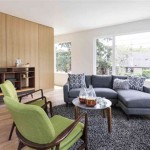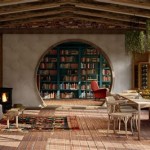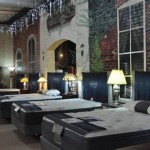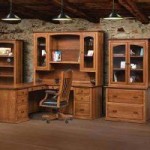Dining Room Furniture: Exploring the Enduring Appeal of Mission Style
Mission style furniture, characterized by its straightforward design, emphasis on functionality, and use of solid wood, has maintained a consistent presence in American homes for over a century. Originally emerging in the late 19th century as a reaction against the elaborate ornamentation of Victorian design, it offers a timeless aesthetic that continues to resonate with those seeking enduring quality and understated elegance in their dining spaces. Mission style dining room furniture brings a sense of warmth and stability to the home, promising durability and a connection to craftsmanship absent in more contemporary, mass-produced alternatives.
The design principles inherent in Mission style are rooted in the Arts and Crafts movement, which sought to revive handcraftsmanship and simple forms. This philosophical underpinning translates into furniture pieces distinguished by clean lines, flat panels, and exposed joinery. The absence of excessive ornamentation allows the natural beauty of the wood, typically oak, to take center stage. This focus on natural materials and minimal embellishment contributes to the style’s enduring appeal and its ability to blend with various interior design schemes.
The enduring appeal of Mission style dining room furniture stems from its robust construction. Pieces are generally built to last, featuring mortise-and-tenon joints, sturdy legs, and thick tabletops. This commitment to durability distinguishes it from furniture made with cheaper materials and construction techniques. The longevity of Mission style furniture is a significant selling point for those seeking a long-term investment in their homes.
Key Characteristics of Mission Style Dining Room Furniture
Identifying Mission style dining room furniture requires an understanding of its defining elements. The furniture emphasizes practicality, durability, and a connection to the natural world through the materials used and the simplicity of the design. These characteristics differentiate it from other furniture styles and contribute to its unique identity.
One of the most recognizable attributes is the use of straight lines and flat panels. Curves and elaborate carvings are largely absent, replaced by a geometric simplicity that highlights the inherent beauty of the wood grain. Table legs are typically square and substantial, providing visual weight and stability. Chairs often feature vertical slats in the back, providing support and adding to the overall linear aesthetic.
Another defining feature is the exposed joinery. Mortise-and-tenon joints, which are known for their strength and durability, are often visible, showcasing the craftsmanship involved in the furniture's construction. This deliberate exposure of the joinery is not intended as a flaw but rather as a celebration of the handmade quality of the pieces. The visible joinery contributes to the authenticity and character of Mission style furniture.
The use of specific materials is also crucial to the Mission style. Oak is the most commonly used wood, valued for its strength, durability, and distinctive grain patterns. Other woods, such as cherry or maple, may be used, but oak remains the most representative choice. The finish is typically a warm, medium tone that allows the wood's natural beauty to shine through. Darker stains are also common, creating a richer, more formal look.
Selecting Mission Style Dining Room Furniture: Considerations for the Modern Home
Integrating Mission style dining room furniture into a modern home requires careful consideration of several factors, including space, style, and functional needs. Understanding these considerations ensures that the chosen pieces complement the existing décor and enhance the overall aesthetic of the dining area.
The size of the dining room is a primary factor in determining the appropriate scale of the furniture. Large, substantial pieces can overwhelm a small space, while smaller pieces may appear insignificant in a larger room. Measuring the dining area and creating a floor plan can help to visualize how different pieces will fit and ensure adequate space for movement. Consideration should be given to the number of people typically accommodated at meal times to determine the appropriate size of the dining table.
The existing interior design style should also be taken into account. While Mission style furniture is often considered timeless and versatile, it is important to ensure that it complements the overall aesthetic of the home. It pairs well with other natural materials, such as stone and leather, and neutral color palettes. It can also be effectively combined with more modern elements to create a balanced and eclectic look. However, it is crucial to avoid clashing styles that can create a disharmonious effect.
Functional needs should also be considered when selecting Mission style dining room furniture. Do you need a table that can expand to accommodate extra guests? Are chairs with arms more comfortable for your needs? Does the dining room serve as a multi-purpose space that requires furniture with built-in storage? Carefully considering these questions will help to narrow down the options and ensure that the chosen pieces meet your specific requirements. Sideboards and buffets, common in Mission style dining rooms, can provide valuable storage space for tableware, linens, and other dining essentials.
Maintaining and Caring for Mission Style Dining Room Furniture
Proper maintenance and care are essential to preserving the beauty and longevity of Mission style dining room furniture. Regular cleaning and preventative measures can help to protect the wood finish and prevent damage from wear and tear. These steps ensure that the furniture remains in excellent condition for generations to come.
Regular dusting is crucial to prevent the build-up of dirt and grime, which can dull the finish over time. A soft, lint-free cloth should be used to gently wipe down the surfaces of the furniture. Avoid using harsh chemicals or abrasive cleaners, as these can damage the finish. A slightly damp cloth can be used to remove stubborn stains, but it is important to dry the surface immediately to prevent water damage.
Protecting the furniture from direct sunlight is also important. Prolonged exposure to sunlight can cause the wood to fade or discolor. Placing furniture away from windows or using curtains or blinds can help to minimize this damage. Avoiding extreme temperature fluctuations is also recommended, as these can cause the wood to warp or crack.
Regular polishing can help to maintain the luster of the wood finish. Use a high-quality furniture polish specifically designed for wood furniture. Apply the polish sparingly and follow the manufacturer's instructions carefully. Avoid using polishes that contain silicone, as these can build up over time and create a hazy appearance. Investing in quality furniture polish is important for preventing damage from using harsh products.
Addressing scratches and dents promptly is essential to prevent further damage. Minor scratches can often be buffed out with a soft cloth and a furniture polish. Deeper scratches may require the use of a touch-up marker or a wood filler that matches the color of the wood. Consult a professional furniture restorer for more significant damage. Regular preventative maintenance and prompt damage repair protects the furniture and keeps it looking in good condition for longer.

Mission Style Cherry Dining Furniture Arts Crafts Room Cleveland By Schrocks Of Walnut Creek Houzz

Mission Dining Room Table

Mission Collection By Canal Dover Furniture

Mission Style Dining Chairs Tables Amish Handmade Cabinfield

Mission Style Dining Chairs Tables Amish Handmade Cabinfield

Usa Made Mission Style Oak Dining Room Set

Coral Gables Craftsman Dining Set Countryside Amish Furniture

Mission 70 Solid Oak Dining Table Set With 6 Slat Back Chairs

Mission Furniture Available At Pts Store Ptsfurniture Com

Cornelius Mission Trestle Dining Table From Dutchcrafters Amish
See Also








